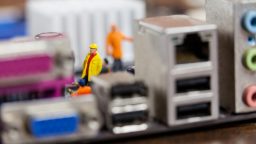Mars, often referred to as the „Red Planet,” has long been a focal point of space exploration. The idea of colonizing Mars has shifted from the realm of science fiction to a tangible goal for scientists, engineers, and private companies like SpaceX. Colonizing Mars offers the potential for humanity to become a multi-planetary species, but it also comes with significant technological challenges and risks. From developing life-sustaining technologies to overcoming harsh environmental conditions, the path to Mars colonization is filled with hurdles. This article explores the technologies being developed for Mars colonization and the challenges that must be overcome to make this ambitious goal a reality.
- Transportation: Getting to Mars
The first major challenge in Mars colonization is the journey itself. Mars is an average of 225 million kilometers away from Earth, making travel time an important consideration. With current rocket technology, it can take anywhere from six to nine months to reach Mars, depending on the alignment of the planets.
To address this issue, companies like SpaceX are developing next-generation spacecraft, such as the Starship. Starship is designed to be a fully reusable spacecraft capable of carrying large numbers of people and cargo to Mars. It features a powerful engine, designed for long-duration space travel, and can carry a significant payload, which is crucial for transporting both astronauts and the materials needed to establish a sustainable colony.
While SpaceX’s Starship is still in testing, it represents a significant step forward in space travel, as it aims to drastically reduce the cost of space missions. Other space agencies like NASA are also working on advanced propulsion technologies, including nuclear-powered rockets, which could shorten travel time and make Mars missions more feasible.
- Life Support Systems: Ensuring Survival
Once astronauts reach Mars, they will face the challenge of surviving in an environment that is inhospitable to human life. The Martian atmosphere is composed mostly of carbon dioxide, with only trace amounts of oxygen. Additionally, temperatures on Mars can drop as low as -125°C at the poles, and the planet lacks a magnetic field, making it vulnerable to harmful solar and cosmic radiation.
To address these challenges, space agencies and private companies are developing advanced life support systems. These systems will need to provide astronauts with clean air, potable water, and food, all while protecting them from the harsh conditions of Mars. Some proposed systems include closed-loop life support systems that recycle air, water, and waste, much like the systems used on the International Space Station (ISS).
Water is one of the most critical resources on Mars, and NASA has been exploring ways to extract water from the planet’s soil and ice deposits. Technologies like the MOXIE (Mars Oxygen In-Situ Resource Utilization Experiment) are already demonstrating the ability to convert carbon dioxide into oxygen, a step toward creating breathable air for settlers. Additionally, using local resources, or „in-situ resource utilization” (ISRU), could make Mars colonization more sustainable by reducing the need for supplies from Earth.
- Food Production: Growing on Mars
For a Mars colony to thrive, it must be self-sufficient in terms of food production. The first settlers will not be able to rely on Earth for their food supplies, as resupplying a Mars colony would be costly and time-consuming. This means that innovative agricultural technologies will need to be developed to grow food in the Martian environment.
One approach is the use of controlled-environment agriculture, such as hydroponics or aeroponics, where plants are grown without soil and receive nutrients through water or air systems. Greenhouses on Mars would need to be pressurised and temperature-controlled to protect plants from the planet’s extreme conditions. Some experiments have already been conducted on the ISS, where plants have been successfully grown in space under controlled conditions. These experiments provide valuable insight into how plants can thrive in low-gravity environments with limited sunlight.
NASA’s „Veggie” project, for example, has successfully grown lettuce and radishes in space. Research like this is essential for developing the methods and technology to produce food on Mars, where traditional farming methods will not be viable.
- Energy Generation: Powering a Mars Colony
A Mars colony will require a reliable and continuous energy source to support everything from life support systems to food production and transportation. Solar energy is the most likely primary energy source for a Mars colony, as the planet receives sunlight for much of its year. However, the distance from the Sun means that Mars receives only about 43% of the solar energy that Earth does, which poses a challenge for solar power generation.
In addition to solar power, nuclear energy is another promising solution. Small modular reactors, which are being developed for use on Earth, could provide a stable power source for Martian colonies. These reactors would supply the necessary energy for heating, electricity, and even water purification. NASA has been exploring the use of nuclear propulsion and power systems for space missions, including Mars exploration, to ensure a reliable power source during long-duration missions.
- Radiation Protection: Shielding Astronauts
Mars lacks a global magnetic field, which on Earth helps protect us from harmful cosmic and solar radiation. This is a significant concern for human colonization, as prolonged exposure to high levels of radiation can lead to serious health problems, including cancer, genetic mutations, and radiation sickness.
To protect astronauts on their journey to Mars and while on the planet’s surface, shielding will be crucial. During the journey, spacecraft will need to be equipped with radiation shielding materials, such as polyethylene, which can absorb harmful radiation. On the Martian surface, habitat modules could be buried under the soil or built with thick walls made of materials like regolith (Mars’ soil) to provide additional radiation protection.
In the longer term, researchers are exploring the possibility of using magnetic fields or electric shields to replicate Earth’s protective magnetic environment, which could help reduce radiation exposure on Mars.
- Psychological and Social Challenges
The physical challenges of Mars colonization are daunting, but there are also significant psychological and social challenges. A Mars mission would involve long-duration space travel, isolation, and confinement, which could have a profound impact on the mental well-being of astronauts. The journey could take months or even years, and once on Mars, settlers would face the harsh realities of an environment where the closest human contact would be thousands of kilometers away.
To address these challenges, space agencies are studying the psychological effects of long-duration missions. Research conducted on the ISS, where astronauts live in confined spaces for extended periods, is helping scientists understand the effects of isolation and stress. Psychological support systems, such as virtual reality (VR) simulations, video communication with family, and regular mental health check-ups, will be essential for maintaining the well-being of Mars settlers.
- The Long-Term Goal: Terraforming Mars
While the immediate goal of Mars colonization is to establish a self-sustaining human presence, the long-term goal may involve terraforming Mars to make it more Earth-like. Terraforming is the process of altering the planet’s atmosphere, temperature, and surface to make it more hospitable to human life.
Ideas for terraforming include warming the planet by releasing greenhouse gases into the atmosphere, creating artificial magnetic fields, and even planting genetically modified organisms that could help create oxygen. However, terraforming Mars remains a theoretical concept, and it is uncertain whether it will be feasible with current technology or in the foreseeable future.
Conclusion
Mars colonization is one of the most ambitious goals humanity has ever set. While technology is progressing at a rapid pace, significant challenges remain. Overcoming the physical, environmental, and psychological obstacles of living on Mars will require continued innovation and collaboration across various fields of science and engineering. However, the rewards of successfully colonizing Mars are immense, offering humanity a new frontier for exploration and a potential backup for life on Earth. The journey to Mars may be long and difficult, but it is one that holds the promise of a new chapter in human history.





